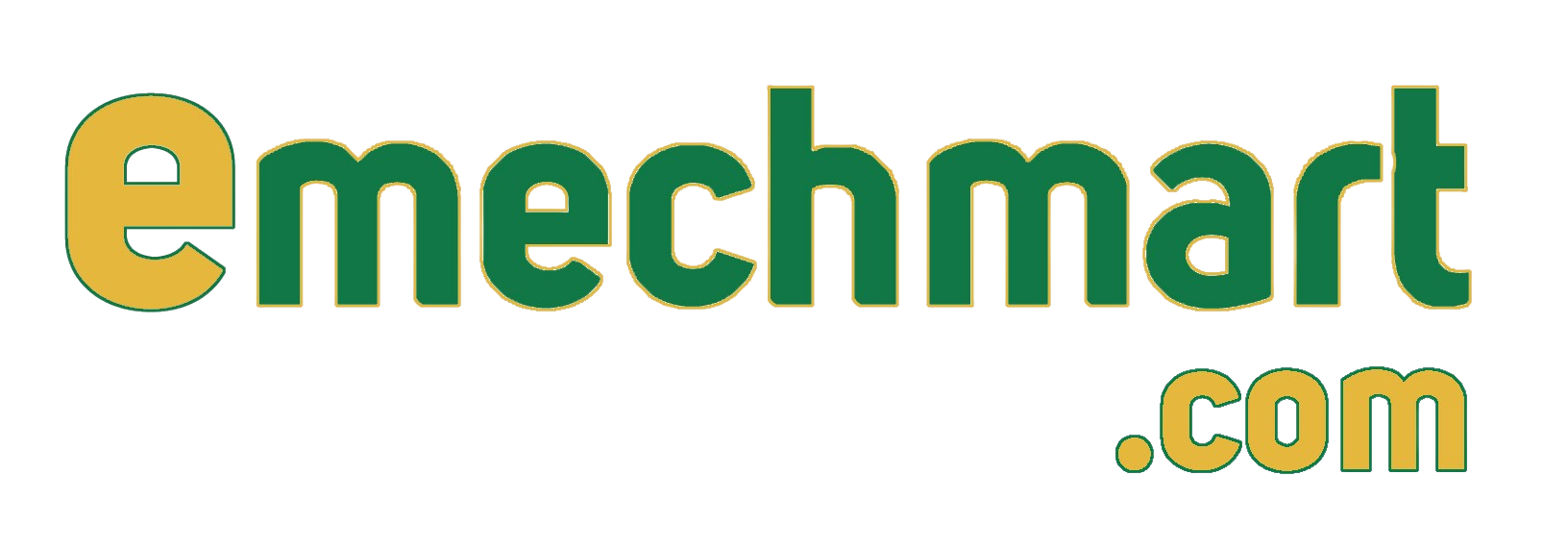A hammer is one of the oldest tools that humans have ever used. People used stones as hammers in prehistoric periods to break food or crack nuts. The design and material of a hammer evolved with the progress of man, metal, and technology, but the premise remained the same: use the handle to hold the hammer and hit the object to make a forceful blow.
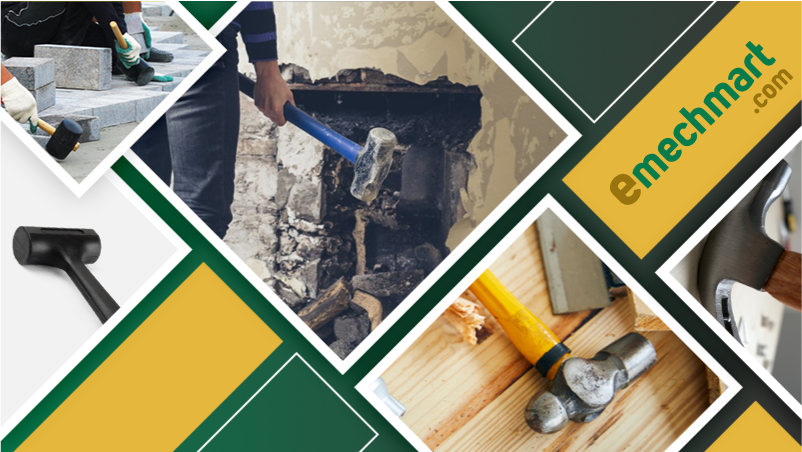
Moreover, there is also a power hammer (hammer drill) available, allowing you to easily drill holes into stone, masonry, or concrete.
A hammer is an important tool for everyday tasks and mechanical operations. The global market value of hammer was valued at US$ 3.5 Bn in 2021, and it is estimated to grow at a CAGR of 4.8% from 2022 to 2031.
Hammers are commonly used to drive a nail into wood, drive steel nails into walls, join pieces of wood together, shape a piece of metal, break an object, and many other “hard-hitting” tasks such as chipping, riveting, punching, forging, straightening, bending, etc.
There are many types of hammers available, and selecting the right one can be a challenging task. Selecting the incorrect one might result in poor workmanship or, worse, serious damage. This article will go over the most common types of hammers, their uses, and how to use different types of the hammer in a workshop.
However, before learning about hammer types and applications, it is important to understand the parts of hammers. This will help us better grasp hammer types and applications.
Part of Hammers
There are many different kinds of hammers, however, they all have the same basic parts. And all of those components are crucial to the construction and use of each hammer. The hammer’s size is classified by its weight and peen size. A hammer’s major parts are its head and handle.
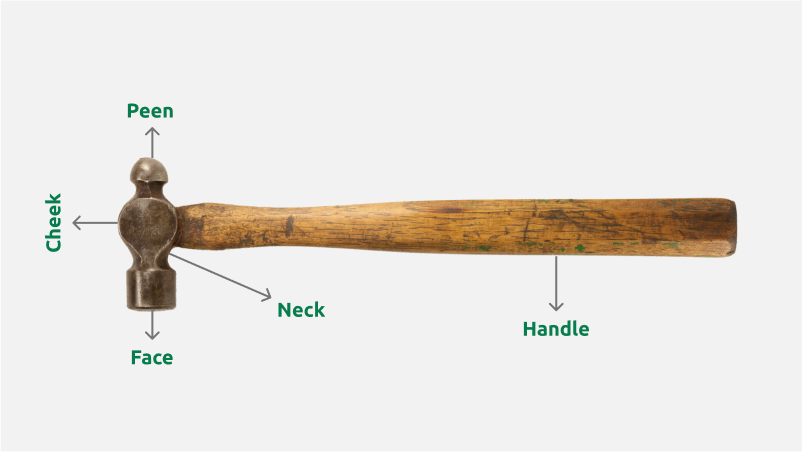
Head
There are many parts to the hammer’s head which we’ll go over in more detail below.
Face: Face is the main part of the hammer that we use to strike a workpiece. To prevent the edges from deteriorating, the face should always be slightly lifted.
Neck: The neck is the small curved portion next to the face. It performs two crucial functions: it secures the head to the handle and gives the hammer balance. The length will vary based on the type of hammer you select
Peen: Peen is located on the opposite side of the face, and is utilized mostly to bend objects or give them new shapes.
Cheek: The cheek is in the center of the hammer. It is the edge of the hammer which holds everything together.
Eye: The eye is on the underside of the hammerhead, making it easy to slide onto the handle. Steel hammers do not have eyes; they are more frequently found on hammers with wooden, and sometimes rubber, handles.
Poll: A poll is a straight area below the face.
Wedge: A wedge works to secure and tighten the handle in the eyehole.
Handle
The hammer handle is mostly made of wood to offer a small spring motion and to withstand shaking. Hammer handle’s length range from 25 cm to 32.5 cm for simple and easy work and from 60 cm to 90 cm for sledgehammers.
Different Types of Hammers and Their Uses
How do you select the best tool for the task when there are so many different types of hammers available? Below are some details of the many types of hammers and their ideal household and commercial uses. So keep reading on!
Claw Hammer
A claw hammer is the most common type of hammer among homeworkers, DIYers, woodworkers (carpentry and furniture), and metal workers. It is commonly used in construction or maintenance to drive or remove nails.
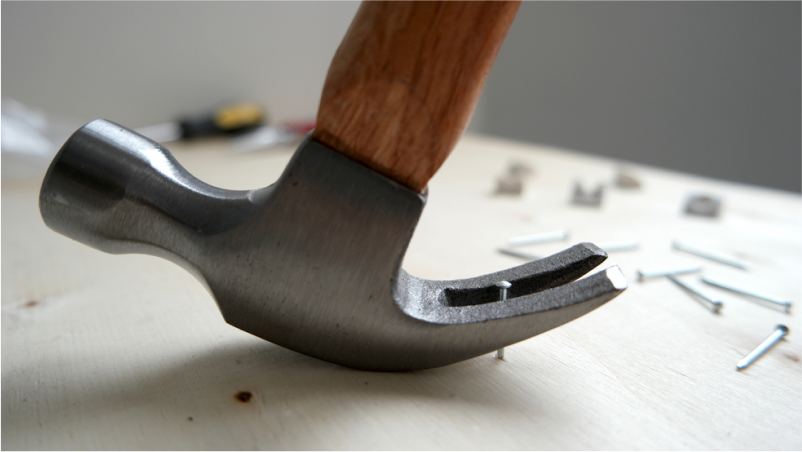
It has one side flat rounded and another side normally curved and has a “V” cutout to draw nails from wood. A claw hammer is usually made up of a metal head and a wood, metal, or glass fiber handle that comes with or without a rubber cover.
Claw hammers come in various sizes, which are employed based on the force and object requirements. Furthermore, the most common weights range from 455 to 680g (16 to 24 oz).
Claw hammers are used for:
- Woodworking
- Prying
- Finishing
- Framing
- Splitting
- Small demolition
| Pros | Cons |
|---|---|
| It can use in multiple places such as farming, woodworking, household, etc | Cannot be used for heavy-duty tasks. |
| Easy to use for all. | Its round head might damage the product’s surface |
| Lightweight makes it the best option for repetitive work | Claw sites can be broken if hit on a hard surface. |
| Replaceable fiberglass and wooden handles |
Sledge Hammer
A sledgehammer is a powerful hammer that is mostly used for demolition work to break down walls and other masonry. It features a flat large metal head with a face on both sides and a long handle that may be used to effortlessly swing it. They often have wooden handles, however, they can also be made of fiberglass.

Blacksmiths commonly use this type of hammer in the workshop to straighten round rods, iron bars, angle iron, channels, flat iron, etc. As it is used for heavy jobs, it has a higher weight—between 4 and 10 kg.
Sledgehammers are used for:
- Breaking concrete, stone, or masonry
- Driving stakes
- Demolition
| Pros | Cons |
|---|---|
| Give powerful impact compared to a normal nail hammer | Hazardous tools cause higher crush points and punch point injury |
| It covers the larger surface area with well-distributed force. | High strength require due to the heavy head and long handle |
| It often used as an exercise equipment |
Framing Hammers
A framing hammer looks very similar to a claw hammer. It is an excellent tool for wood framing. It features a more angular claw and is heavier and longer than a normal claw hammer. The reason behind this was that framing hammers are required to drive long, thick framing nails into tough studs and beams.
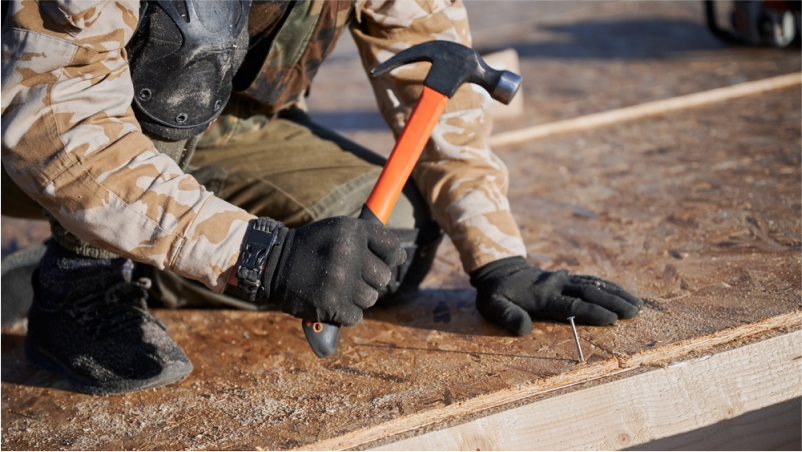
Carpenters and woodworkers use this type of hammer to drive nails into the frame walls of houses.
Framing hammers are used for:
- Woodworking
- Framing
- Prying
| Pros | Cons |
|---|---|
| It provides higher force compared to accuracy | It is twice heavier than a claw hammer. |
| Its long handle and heavier head help in reducing blow-to-drive nails. | Unsuitable for fine carpentry as it leaves waffle imprints on the surface. |
| Its grove or magnet enables the user to nail with one hand. |
Dead Blow Hammer
The dead blow hammer is an effective hammer used to control striking force while reducing bounce or to reduce damage to the hitting surface. Hence, it is specially designed for soft-hitting operations. The hammer’s head can be solid or hollow, helping to distribute the impact’s energy over a long period and lessen rebound.
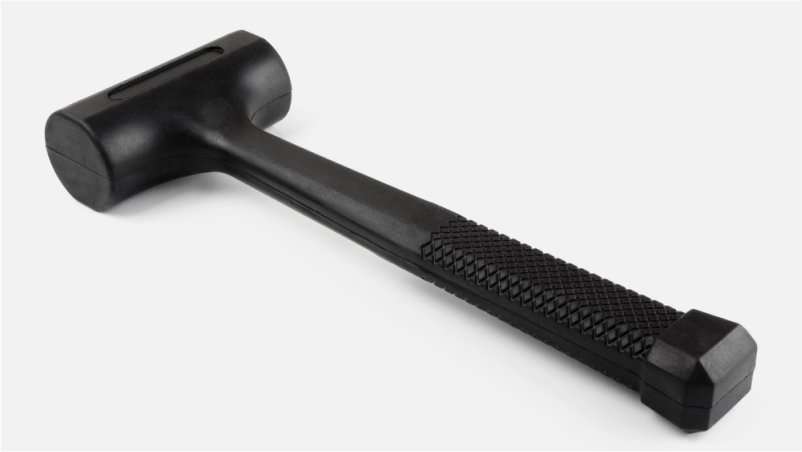
A solid rubber or plastic head or a hollow head filled with lead shot, steel shot, or sand build up this type of body hammer. This type of woodworking hammer taps wood together or apart without damaging the surface and in auto repair to dislodge parts and mend dents.
Dead blow hammers are used for:
- Automotive applications
- Setting joints
- Installing floorboards
| Pros | Cons |
|---|---|
| Prevent accidental damage in compact places due to minimal rebound. | Time-Consuming due to lack of bounce and recoil. |
| Required less muscle strength as the blow exerts a lot of force with each swing. | Less effective for driving nails. |
| Its deadening effect makes it a quieter hammer among all. |
Ball Peen Hammer
This type is designed for peening or shaping metal materials by hammering. The hammer has a ball-shaped face on one side of the head and a flat face on the other side.
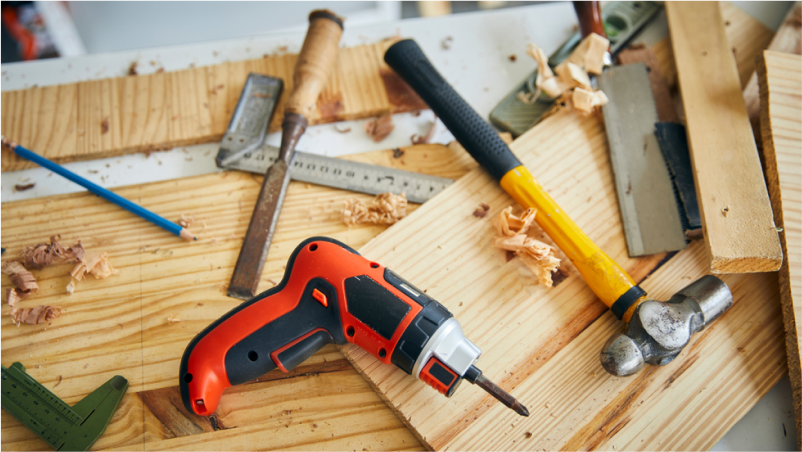
The face, peen, eye hole, and handle are the components of the hammer. They are available in many sizes ranging from about 55g to 1400g. Ball peen hammers are hard and tempered. Large-size hammers are used for bench work, whereas small-size hammers are used for layout work.
Ball peen hammers are frequently used for:
- Metalworking
- Rounding edges
- Punching and riveting
- Striking masonry drill and steel chisels
| Pros | Cons |
|---|---|
| It is a tough and long lasting tool uses for machine repairing | Heavy ball peen hammer hands wear more quickly. |
| It is cost effective compared to other options available for household work. | Can’t use it for an extended period of time. |
| It is often used as multipurpose tools for manufacturing, shaping and riveting. |
Mallets
A mallet is a handle-mounted block used to drive chisels. Mallets are lightweight and made from solid wood, rubber, or leather. This type of hammer offers a softer impact than hammers with metal heads. Mallets are the best option if your work needs to be free of impact marks.
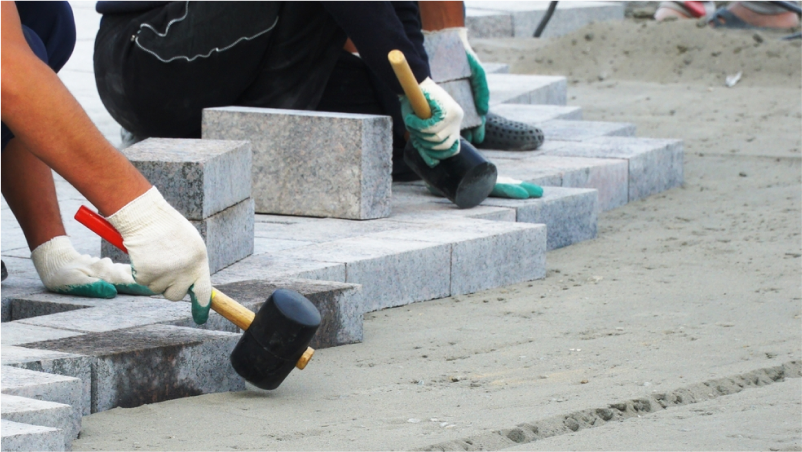
Mallets are used for:
- Shaping metal
- Fitting wooden parts
- Plasterboard
| Pros | Cons |
|---|---|
| Delivers soft blows. | Big blunt face not suitable for precision work. |
| Best for driving chisels and cutting tools. | High rebound may hit back the user. |
Conclusion
Hammers are one of the most important and powerful tools. There are multiple types of hammers and some of them have similar features. These versatile tools are very useful for numerous tasks and use cases but the basic fundamental of each hammer is the same: hit an object with great impact.
We saw six types of hammers in this guide along with their typical applications, pros, and cons. To match the perfect hammer for your job or task, you will have to learn more about various hammer designs and their intended uses. Doing this will help you operate more effectively and lessen the wear and tear on your gear.
